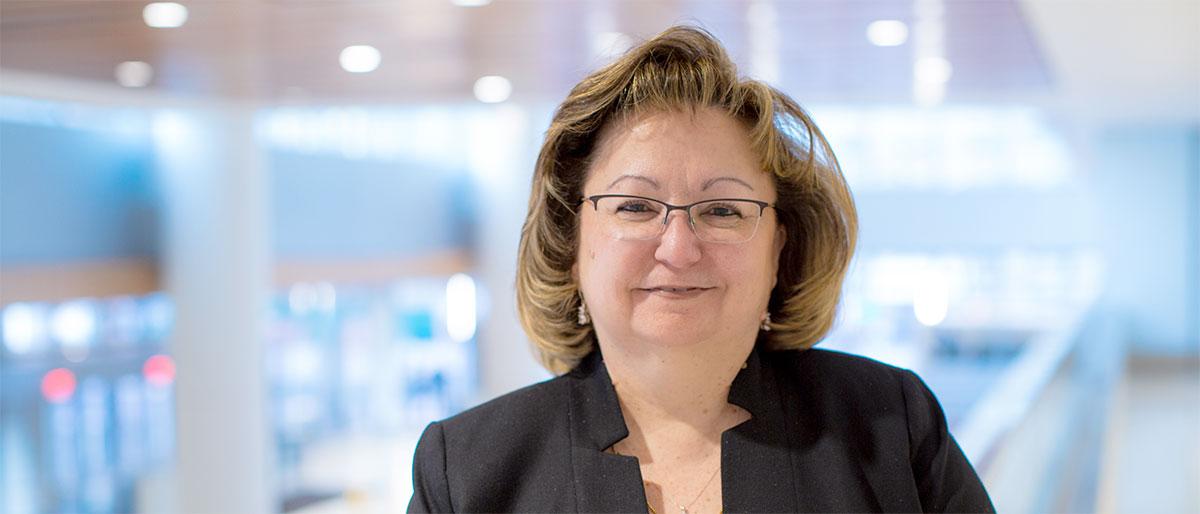
Nancy Sanchez set out to build a more agile, responsive and creative team knowing that her human resources staff at NYU Langone Health was staring at a huge growth challenge.
As senior vice president and vice dean of HR and organizational development and learning, Sanchez has watched the number of employees her team serves skyrocket from 9,000 in 2007 to 33,000 today. And with that count expected to reach 42,000 by the end of the year, Sanchez needed to act fast to prepare and transform her 120-strong HR team for the work-force deluge.
“The staffing needed within HR to support that type of exponential growth was not going to occur at the same rate as the organizational growth, so we needed a different model to sus-tain the level of service that was needed,” Sanchez says.
Building an Empowered HR
Sanchez teamed up with Cornell ILR Professional Education to launch an HR boot camp that cross-trained her entire team across all disciplinary areas. Over a three month period, cohorts of up to 40 individuals participated in the program.
The goal of the boot camp is “to expand HR practitioners’ knowledge in HR practices outside of their specialty areas, enabling them to engage in helpful client discussions across a broader range of topics,” Janet Rizzuto, executive director of ILR's Programs for Senior Leaders, notes. At the end of the boot camp, each participant was awarded a Certificate in Human Resources Management from Cornell ILR.
The boot camp “allowed my staff to build an appreciation for the challenges and complexities involved in each other’s sub-specialties with HR,” Sanchez says. “There were many ‘aha,’ moments that they cite all the time and continue to do with the foundational knowledge they acquired.”
Among the takeaways for Sanchez’s team is a better understanding of the challenges individuals face in their respective areas of expertise.
“One of the things I am more cognizant of, is the downstream impact that an action has,” one staff member says. “For example, if a mistake is made at the beginning of the hire process, it has a downstream impact on other HR functional areas and impacts that hire’s smooth transition into the organization.”
Another member of Sanchez’s team says they have changed how they engage with employees when having difficult conversations.
“I make sure I fully understand the issue and clarify anything that is unclear before formulating a response” for the employee, the staff member says.
The boot camp also encourages individual team members to act with a greater sense urgency to help others in the department with challenges and issues.
“I’m more aware of what my colleagues handle on a day-to-day basis and that has helped open up dialogues and partnerships to get things done,” another staffer says.
Breaking Free of the HR Silo
One follow-up from the boot camp is an HR Solutions Center where dedicated staff can ad-dress a range of questions, issues and concerns. Sanchez’s team also is working on stream-lining and automating as many processes as possible so her staff can focus on personal ser-vice.
Additionally, the HR leadership has maintained the momentum of these sessions through a series of additional trainings and cross-functional committees where opportunities such as analytics, communications, continuous improvement and processes can be addressed.
The faculty and staff that Sanchez’s team serves at NYU Langone Health no longer call on HR “with one dimensional type of questions that [were] more common at a different point in the past [and that] may have been easier to manage,” she notes. “Today, they are calling about issues or with questions that require the need to understand the multiple specialties within HR in order to provide a high level of service that is expected from an HR profession-al."
The HR Solutions Center aims to give staff time to plan for the future, something that was not possible in the past, and to address demographic changes and to stay on top of the ever-evolving healthcare industry.
Sanchez's group also has created an HR generalist development rotation program where some staff spend time in each specialty area and are now charged with training others about broader policies and practices, and helping them make connections among HR subspecialties. This program has enabled the ability to be nimble through using the generalists for projects and/or to go into various new HR roles as a result of their acquired knowledge and experi-ence.
In practice, the HR generalists have reviewed outdated policies “without the extensive train-ing that would have historically had to occur that included other areas of HR,” Sanchez adds.
Overall, the new initiatives enacted since the boot camp center around a “One HR,” ap-proach. This is premised on employees viewing and judging the department on its ability to deliver on a host of issues no matter who they turn to for help. The team’s strength lies in the entire HR workforce being equipped with the knowledge and agility to solve complex and varied problems across the organization.
“When someone praises or criticizes us, it’s always about ‘HR,’ rather than benefits versus compensation, etc.,” Sanchez says. “So the strength of HR is about operating as one unit.”